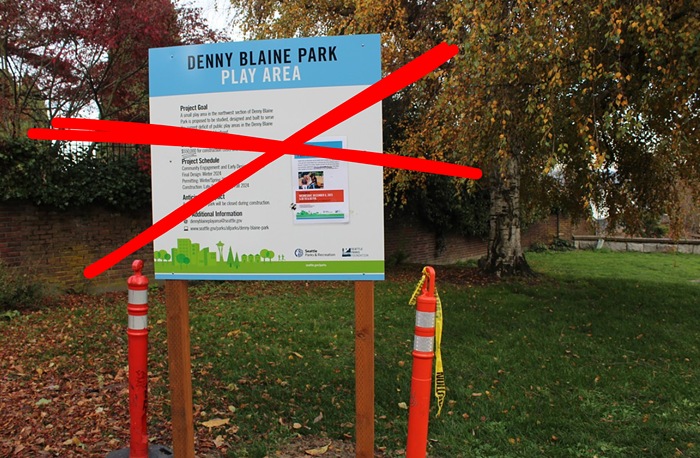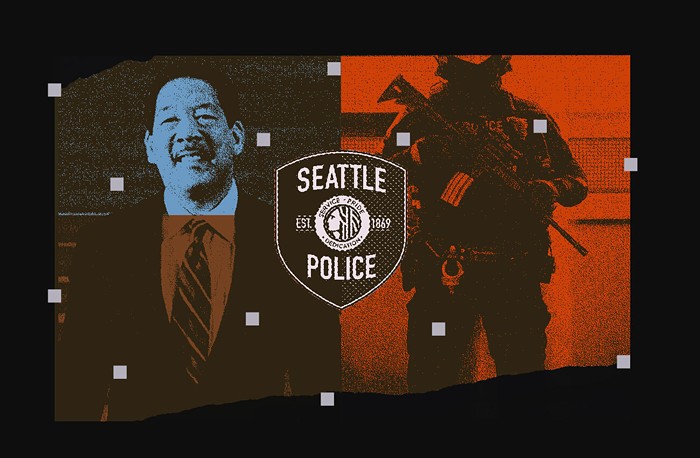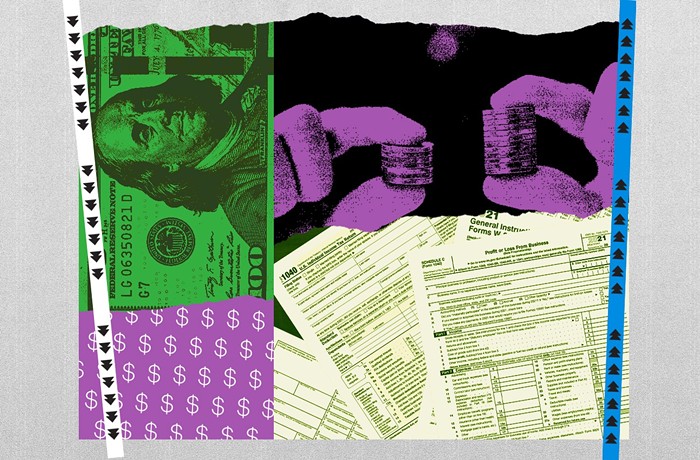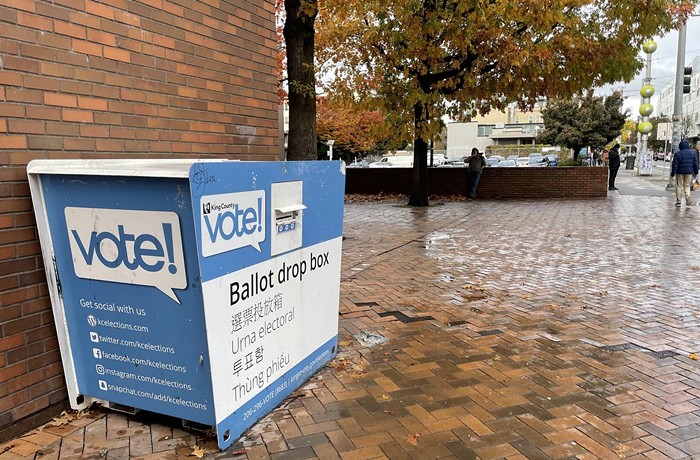Jesse Edwards is a well-known, controversial figure in Seattle's art community. His work has been shown at downtown gallery BLVD. Edwards's brusqueness and unusual artwork—oil paintings of skateparks, Twinkie-and-bong still lifes, and vomiting cheerleaders—have earned him profiles in the Seattle Post-Intelligencer and Seattle Magazine, highlighting Edwards's irreverent aesthetic and ruffled nature. In a 2006 article, P-I art critic Regina Hackett portrays Edwards as a rebellious, lovable scamp; she seems both entranced and repulsed by Edwards's spartan lifestyle in his studio littered with bongs and porn. Seattle Magazine also featured Edwards in its 2007 issue, championing Edwards's "big mouth and unwillingness to put up with the politics of academic art." While Edwards's abrasiveness was titillating enough to editors at the P-I and Seattle Magazine, portraits of the young artist left out the most important detail: It's no wonder Edwards is abrasive; he's the cofounder of the infamous Seattle graffiti gang 3A.
Edwards—tall, wiry, tattooed, and eager to talk about his art—just turned 30 in August. He works nights as a security guard at a Sodo club so he can spend his days painting. On Saturday, August 25, Edwards is working the door at a black-metal show in South Seattle. As the leather-clad lead singer screeched and the cloaked keyboardist pounded away next to a billowing smoke machine, Edwards spoke about his younger years of skating, tagging, and getting into fights at Westlake Center. He says that when he was growing up and getting into graffiti, older writers wouldn't give him the time of day. So Edwards founded 3A with his brother Travis and several other skaters as a support group of sorts for young graffiti writers. Now, 3A has upward of 50 members. At least those are the ones Edwards says he knows about. The loosely knit group of graffiti artists, taggers, and skateboarders—whose ages range from 18 to 35—is constantly growing, inducting new members, and marking their territory all over the city. It's hard to go more than a few blocks in downtown or the Capitol Hill area without seeing a 3A tag—a simple 3 next to the letter A—splashed across a bus stop, garbage can, wall, or window.
Other graffiti artists are very guarded when talking about 3A, and no one wants to cross them. The group has developed a bizarre, near-mythic violent reputation. The Stranger contacted several 3A members, most of whom readily admit to dealing drugs and assaulting rival taggers. One member, according to court records, is in jail for stabbing another man at a party. While no graffiti artists were willing to go on record about 3A, local graffiti message boards are littered with trash talk about the group.
"3A is a bunch of meth heads. They have SOME talent but other than that they are just crazy motherfuckers who get fucked up on meth and go kill shit," says one post on the Pacific Northwest Graffiti site. 3A stands for American Aerosol Artists or Against All Authority or 3 Assholes, depending on whom you ask. The latter a disparaging nickname given by Seattle Public Utilities graffiti ranger Anthony Matlock ["Lone Ranger," Jonah Spangenthal-Lee, Aug 23]. 3A has its share of detractors in the Seattle graffiti community, but members seem to feed off of the group's reputation. "I think people should be scared," says GORE, a 23-year-old 3A member. "It's okay to feel that we're a gang and a bunch of thugs. We are." Cofounder Travis sent me an e-mail touting 3A's tough-guy reputation, claiming they even have a constitution "lightly based on the Mexican mafia code of conduct."
While Edwards doesn't necessarily consider 3A to be a gang (Edwards' criminal record consists of minor driving infractions and citations for skateboarding at Westlake), he does require unwavering loyalty from members of his crew. Back at the rock club in South Seattle, several other 3A members have shown up to talk about the group. After talking for a few minutes he clams up and tries to minimize his involvement with 3A. Edwards—who refers to 3A as a "brotherhood" rather than a gang—loses it. He abruptly tears into the man, chastising him for never getting a 3A tattoo and for not "representing" 3A, and immediately revokes his membership. "That's what we do to weak-ass motherfuckers," Edwards says before turning his back on the man and walking away. "We're stronger now that we got rid of the weakest link."
After the show, Edwards heads up to a legal graffiti wall, just across from the Seattle School District's headquarters on Third Avenue South and South Lander Street. Along the way, he points out numerous 3A tags—and those of rival crews—on Dumpsters, walls, and train cars.
Edwards says he has used the group to mentor its younger members. He claims he's gotten one member into art school, and tries to help kids hone their spray-can craft whenever he can. All he asks for is a bit of allegiance.
3A's appeal seems to be the bond found in the piecemeal familial network Edwards and the rest of 3A's older generation have created. Members waver back and forth between referring to each other as soldiers or as family, but ultimately they all fall back on a shared love of graffiti and skateboarding. That's what Edwards tries to focus on. He knows drugs and violence are part of the young 3A members' lives, but he tries to intervene when he can.
While Edwards is trying to help the kids in 3A grow up, he's not quite there himself—and he doesn't want to be. He's seen the path many other graffiti artists have taken. "They grow up, they get a job, they get comfortable," he says. "I'm too far gone. If I give up now, then it's all been for nothing."
Edwards stands at the legal graffiti wall, holding a copy of Seattle Exotic Underground in one hand and a spray can in the other. He shakes a can of white America's Best spray paint, turns and begins painting a portrait of a woman from the magazine. It doesn't look much like the photo—the jaw is too strong and the eyes are cold and lifeless—but Edwards doesn't seem the type to care what other people think. ![]()


















